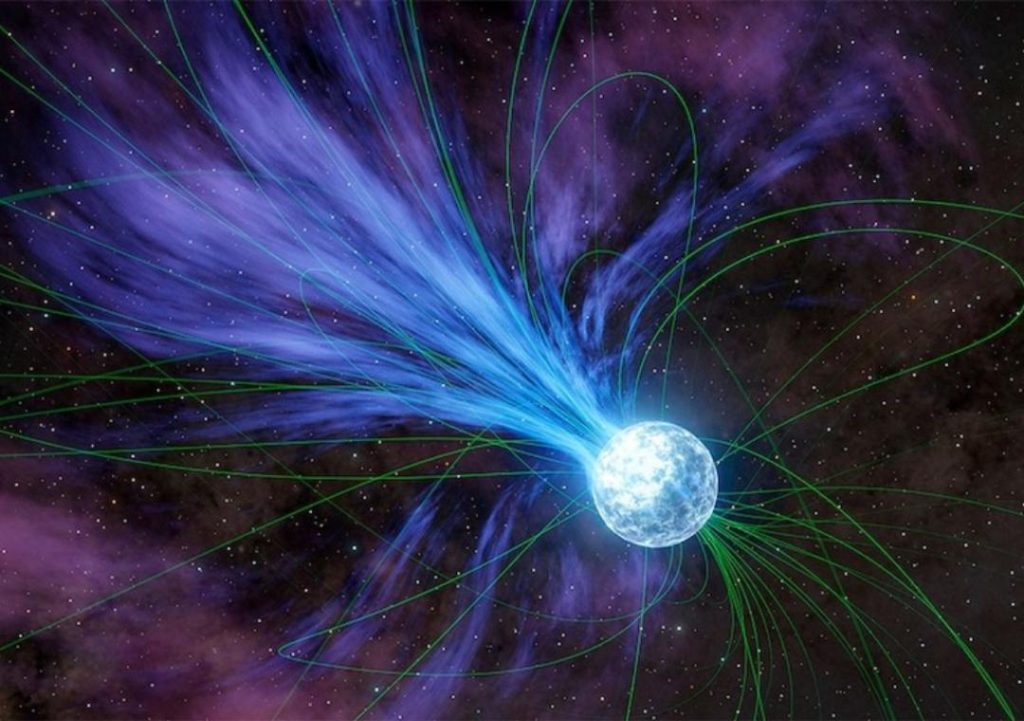
Gold & Platinum Created through Neutron Stars’ Explosions: Study
For centuries, humans have been fascinated by the origins of precious metals like gold and platinum. Where did these valuable resources come from? Scientists have been pondering this question for a long time, and finally, a study led by Columbia University student Anirudh Patel has provided a groundbreaking answer. According to the study, magnetars or highly magnetized neutron stars helped create elements like gold and platinum in a cosmic event over 20 years ago.
Magnetars are incredibly powerful objects in the universe, with magnetic fields that are thousands of times stronger than those of the Earth. When they explode, they release enormous amounts of energy, including flares that contain elements like gold and platinum. These explosions, known as magnetar flares, occur approximately once per decade in the Milky Way galaxy and annually across the observable universe.
The study, published in the journal Nature, used data from NASA’s Chandra X-ray Observatory to analyze the light emitted by the magnetar flare. Researchers discovered that the flare contained a significant amount of heavy elements, including gold and platinum. This is because the intense heat and energy released during the explosion caused the elements to be created through a process known as rapid neutron capture, or r-process nucleosynthesis.
R-process nucleosynthesis occurs when atomic nuclei are bombarded with free neutrons, causing them to merge and form heavier elements. This process typically happens in extreme environments, such as during the explosion of a massive star or the merger of two neutron stars. However, the study suggests that magnetar flares may also be a significant source of heavy elements in the universe.
The discovery of magnetar flares as a source of heavy elements has significant implications for our understanding of the origins of precious metals like gold and platinum. Traditionally, scientists believed that these elements were created in the hearts of massive stars through a process known as supernova nucleosynthesis. However, the study suggests that magnetar flares may have played a more significant role in creating these elements than previously thought.
“We have long known that magnetars are powerful objects, but we didn’t realize they were capable of creating heavy elements like gold and platinum,” said Dr. Patel, the lead author of the study. “This discovery has significant implications for our understanding of the origins of precious metals and the formation of the elements in the universe.”
The study’s findings also have implications for the search for life beyond Earth. The presence of heavy elements like gold and platinum on other planets could be a sign of the presence of a magnetar flare in their past, which could have created the conditions necessary for life to emerge.
While the discovery of magnetar flares as a source of heavy elements is significant, it also raises new questions about the origins of precious metals. If magnetars are responsible for creating gold and platinum, then where did these elements come from before the formation of the first magnetars?
To answer this question, scientists will need to continue studying the properties of magnetars and the elements they create. The study’s findings also highlight the importance of continued funding for space-based observatories like NASA’s Chandra X-ray Observatory, which has played a critical role in the study’s research.
In conclusion, the study led by Anirudh Patel has provided a groundbreaking answer to the question of where gold and platinum come from. Magnetars or highly magnetized neutron stars helped create these precious metals through their explosions, releasing flares that contain these elements. The discovery has significant implications for our understanding of the origins of precious metals and the formation of the elements in the universe.
Source:






